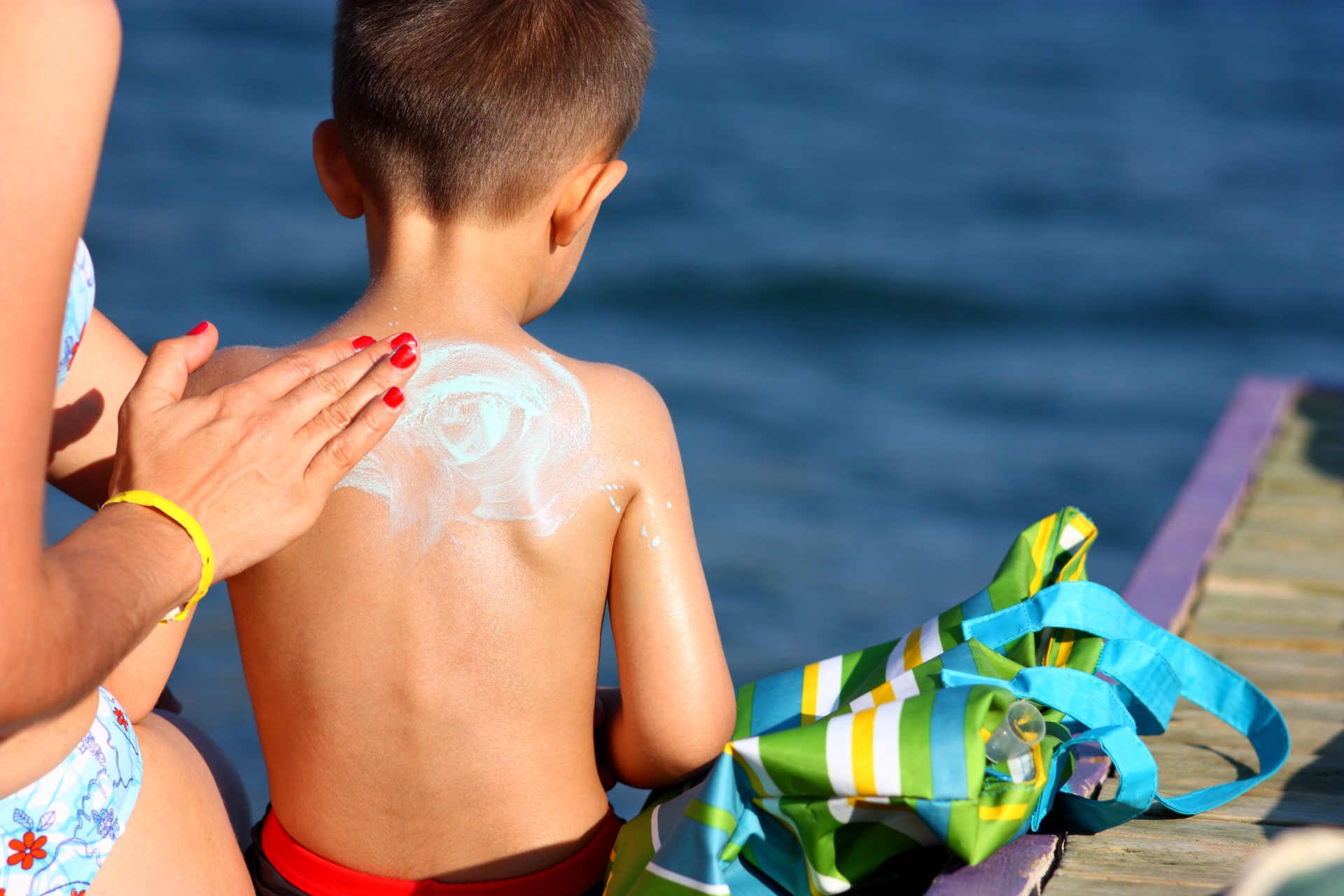
There are so many formulations and decisions to make when choosing a sunscreen. It can be easy to become overwhelmed. The American Academy of Pediatricians (AAP) recommends using sunscreen with at least 30 SPF in those 6 months or older. When able, choose a mineral based sunscreen with zinc oxide or titanium dioxide. Mineral based sunscreens provide broad spectrum protection and are less likely to cause skin irritation. Below are answers to common questions.
Why should we use sunscreen, don’t we need it for Vitamin D?
- Yes, the sun is a great natural source of Vitamin D
- However, sunscreen provides protection from photoaging, against sunburn, and decreases the risk of different types of skin cancers
- Approximately 50% of 11-18 year-olds experienced a sunburn in the past year
Who should use sunscreen?
- All skin types, though those with lighter skin types may be more susceptible to sun damage
What about infants under 6 months of age?
- You should discuss this with your child’s doctor
- It is generally recommended to use shade and sun protective clothing as a first line of protection
- If areas remain exposed, use a mineral based sunscreen
What increases risk of sunburn?
- The closer to the equator, the stronger the UVB rays, the higher the risk
- Time of day, the closer to noon, the higher the risk
- Altitude
- Reflection of the sun’s rays from snow, water, and sand
- These factors are important to consider when traveling
How do sunscreens work?
There are generally two methods, related to the two main subtypes of sunscreen:
- Organic (also referred to as chemical) sunscreens absorb the sun’s rays and convert it to a minimal amount of heat
- An example is oxybenzone
- Often used as they may provide a more cosmetically acceptable result after application
- Inorganic (physical) sunscreens work by reflecting and scattering the sun’s rays
- Examples include Zinc oxide and titanium dioxide
- An advantage is that they are less likely to cause irritation or a sensitivity reaction
- A disadvantage is that they may be more difficult to rub in causing a cosmetically unacceptable result for some
What does Broad Spectrum mean?
- Provides protection against both UVA and UVB rays
- As of 2012, a sunscreen may only carry this label if it provides adequate protection to both
What does SPF mean?
- Sun Protection Factor (Specifically to UVB rays)
- Minimum dose of solar radiation that produces skin redness when using a 2 mg/cm2 application
Can sunscreen really be waterproof or sweatproof?
- Sunscreens may no longer be labelled sweatproof or waterproof
- Sunscreens may be labeled as water resistant if they maintain their SPF for 40 minutes after use, or very water resistant if they maintain their SPF for 80 minutes
How much sunscreen should I apply and how often?
- It is recommended to use 0.5-1.5 oz. depending on body size. This is roughly the amount of sunscreen that will fill the person’s palm.
What about safety?
- Several recent studies of Zinc oxide and titanium dioxide suggest these do not penetrate to the underlying skin layers and do not carry a significant risk of systemic absorption
- A 2019, an FDA study of organic (chemical based sunscreens) of 24 individuals found that with maximal use of 4 commercially available sunscreens, there were plasma concentrations of levels above the FDA threshold to potentially waive nonclinical toxicology studies
- This supports the need for further study
- The authors state the results do not suggest individuals should refrain from the use of sunscreen